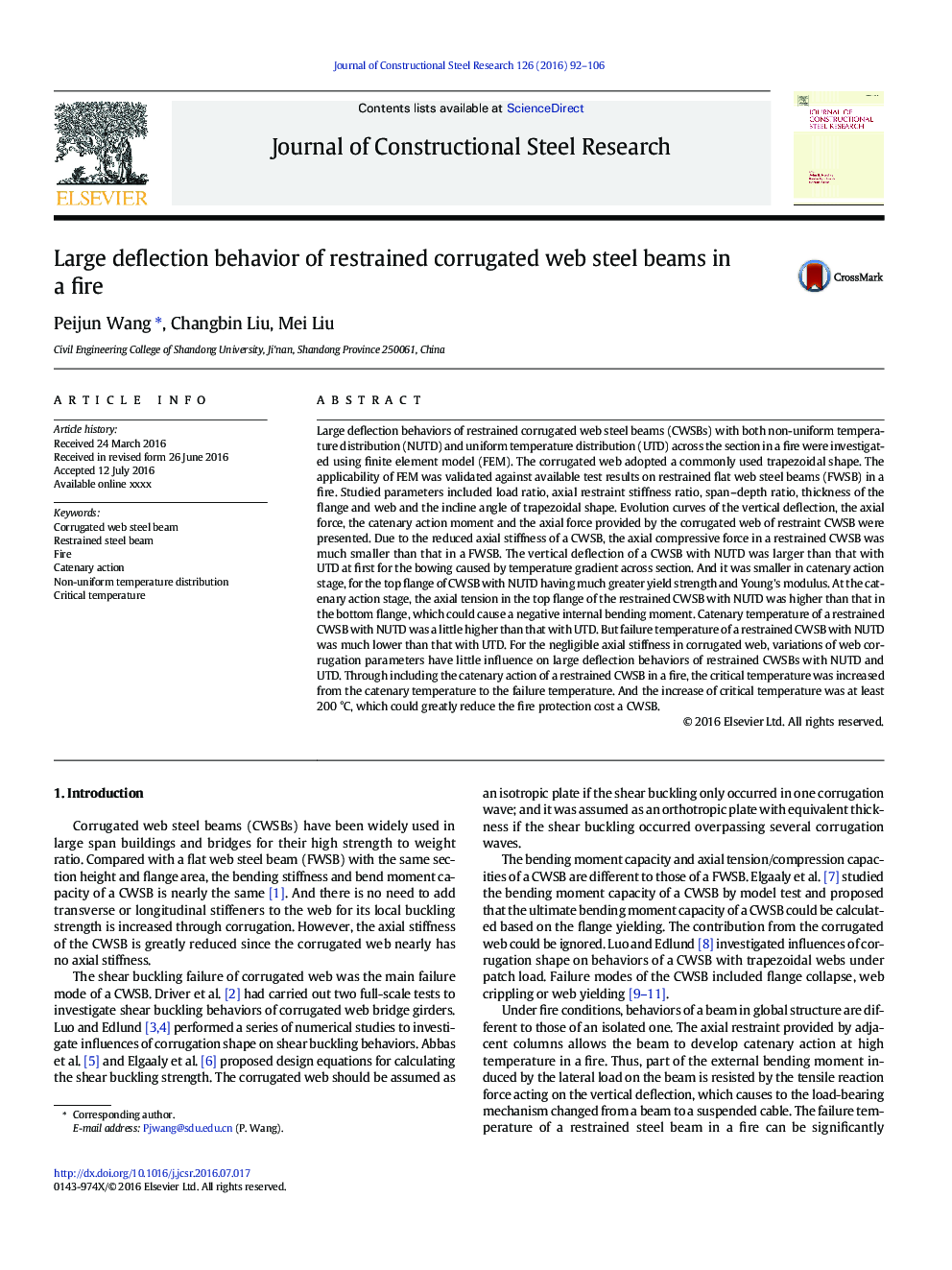| کد مقاله | کد نشریه | سال انتشار | مقاله انگلیسی | نسخه تمام متن |
|---|---|---|---|---|
| 284201 | 509132 | 2016 | 15 صفحه PDF | دانلود رایگان |
• Large deflection behaviors of restrained corrugated web steel beams (CWSBs) in fire were studied.
• Both uniform (UTD) and non-uniform (NUTD) temperatures across sections were investigated.
• Bending moment equilibriums of restrained CWSB at different stages were proposed.
• Load ratio, axial restraint stiffness and span–depth ratio greatly affected large deflection behaviors.
• Web thickness and corrugation shapes of the web had insignificant influences on the behaviors.
Large deflection behaviors of restrained corrugated web steel beams (CWSBs) with both non-uniform temperature distribution (NUTD) and uniform temperature distribution (UTD) across the section in a fire were investigated using finite element model (FEM). The corrugated web adopted a commonly used trapezoidal shape. The applicability of FEM was validated against available test results on restrained flat web steel beams (FWSB) in a fire. Studied parameters included load ratio, axial restraint stiffness ratio, span–depth ratio, thickness of the flange and web and the incline angle of trapezoidal shape. Evolution curves of the vertical deflection, the axial force, the catenary action moment and the axial force provided by the corrugated web of restraint CWSB were presented. Due to the reduced axial stiffness of a CWSB, the axial compressive force in a restrained CWSB was much smaller than that in a FWSB. The vertical deflection of a CWSB with NUTD was larger than that with UTD at first for the bowing caused by temperature gradient across section. And it was smaller in catenary action stage, for the top flange of CWSB with NUTD having much greater yield strength and Young's modulus. At the catenary action stage, the axial tension in the top flange of the restrained CWSB with NUTD was higher than that in the bottom flange, which could cause a negative internal bending moment. Catenary temperature of a restrained CWSB with NUTD was a little higher than that with UTD. But failure temperature of a restrained CWSB with NUTD was much lower than that with UTD. For the negligible axial stiffness in corrugated web, variations of web corrugation parameters have little influence on large deflection behaviors of restrained CWSBs with NUTD and UTD. Through including the catenary action of a restrained CWSB in a fire, the critical temperature was increased from the catenary temperature to the failure temperature. And the increase of critical temperature was at least 200 °C, which could greatly reduce the fire protection cost a CWSB.
Journal: Journal of Constructional Steel Research - Volume 126, November 2016, Pages 92–106
